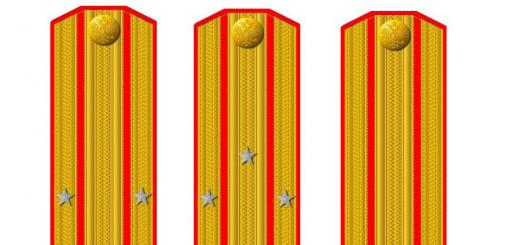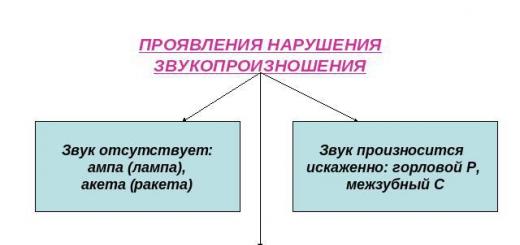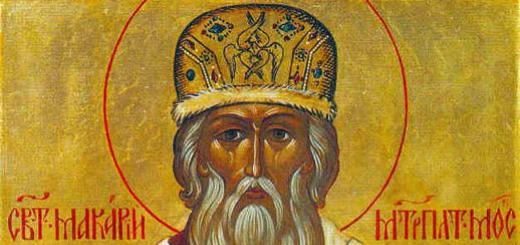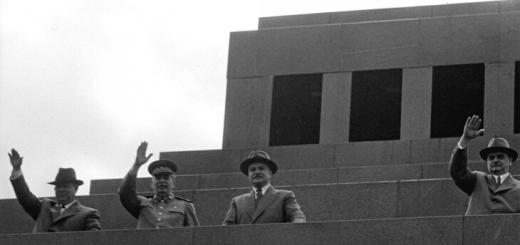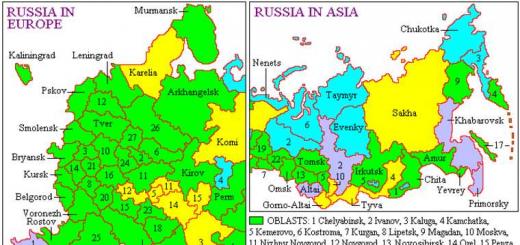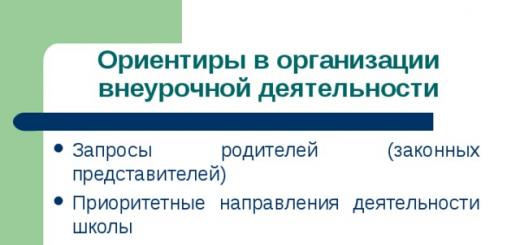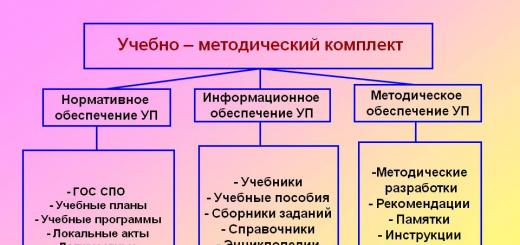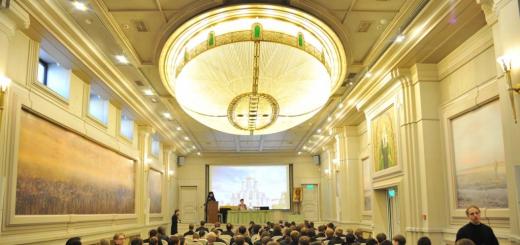Natalia Alekseevna Vasilyeva Anatoly Efimovich Buslov tells how Easter was celebrated in his childhood.
Memoirs of Anatoly Buslov
You know, more than sixty years ago, holidays were more prominent and meaningful days, at least for children, than now (1947…..JV). Any current holiday differs little from ordinary Sunday. At the same time, Easter, for example, was, as they said, a holiday of holidays, a triumph of celebrations.Spring dramatically changed our life. The calf was expelled from the hut, and the chickens were expelled from under the stove. The hut was ventilated and preparations for Easter began.
The female part took up the scrapers. All the dirt and soot accumulated over the winter were scraped out with ferocity, with boiling water. There was a complete massacre of cockroaches, bedbugs, crickets and all other evil spirits.
Everything was scrubbed, washed, washed. God forbid that there should be something dirty lying around for Easter. From the middle of last week the cooking began. Mother was a big hospitable person, she loved to celebrate the holiday properly, so every means was used. True, apparently, many of them were not required. Well, we had our own ham, our own pig, our own fried and jellied fish, our own chicken, and sometimes a goose. Well, eggs, sausage, cottage cheese, sour cream were not bought either. Oil, lard - your own. We had to buy white flour, raisins, various seasonings, except horseradish, which our gardens were overgrown with. Vodka and wine had to be bought, sugar too. Be that as it may, if there is no money, then a lot of work is required. It was necessary to start saving eggs, cottage cheese, butter, sour cream, etc. long ago. It was necessary to cook, and fry, and season, like good people. But our Easter table presented a wonderful picture.
Well, can I, who now receive about one and a half thousand rubles a month, set such a table? No way. Firstly, the whitest, patterned tablecloth covered the unusually large table. And it was big because they nailed another board to it on one side and the other. Then, along the bottom of the tablecloth, along the edge of the table, between all the dishes, there was a tree tree. I don’t know what the real name of this early creeping green plant is, but it very much decorated the table. On the table in the center, of course, is Easter cake. The Easter cake is tall, tanned, with a yellow crumb, with raisins - beautiful, tasty! There is also a cheese Easter - sweet with raisins and a pile of colored eggs on a large platter. There are also two bottles of vodka and the same amount of wine. If my grandchildren read this writing of mine, don’t think that this is the table of a rich man. No, this is the festive table of a hardworking and intelligent peasant housewife with a very small plot of land. Nekrasov spoke and wrote very well about such workers.
Then they showed off: a ruddy pig stuffed with buckwheat porridge, a chicken, a duck, and, sometimes, a goose, importantly, glistening with fat, took their place. A jellied stuffed pike, all its length in a wooden trough, swam in jelly, chunks of fried bream pleasantly attracted, homemade sausage, cut into large pieces, jellied meat and something else.
It must be borne in mind that the mother had three daughters, girls (two came for Easter). And she knew how to receive visitors in such a way that they did not cross the line of restraint and decency of behavior.
Of course, we had a lot of relatives, both on our father’s side and on our mother’s side. Therefore, there was no end to visitors. My mother had more than fifteen godchildren alone.
Easter day began at three or four o'clock in the morning, when one of the elders went to celebrate Easter. Children often became attached to these elders. About an hour later they returned with sacred products, and the whole family sat down at the table to break their fast. At this meal one could ask for anything without fear, and everything was given unconditionally. Of course, the adults were especially generous with the food on display. Here all sorts of leftovers that didn’t make it to the table appeared: jellied meat, ham scraps, fried fish. Well, everyone always ate a colored egg, as well as a piece of Easter cake and Easter, like blessed gifts. In any case, everyone was full and well-fed. After this the table was cleared.
Father buried all the bones, egg shells, and crumbs in the garden, and mother took us out into the yard to see how the sun “rejoiced.”
I subsequently observed this interesting phenomenon many times, but as if it were yesterday, I remember how we admired the sun through the fence, coming off the edge of the earth. Its colors were constantly changing: red, purple, orange, blue, yellow and, especially beautiful, green, constantly appearing and disappearing, changing in this enchanting and magical game. The sun really rejoiced. With such a fascinating spectacle, it was impossible not for the people to rejoice. “Christ has risen from the dead!”...Yes, it is Mother Nature, Mother Earth, who has risen under the jubilant sun. A person’s life was renewed, his hopes for a well-fed and happy life came to life. Even if these peasant hopes were in vain, they called him to work, to fight, they instilled in him faith in a better future.
After admiring the sun, the older part went to bed, and the younger part, having received a pair of eggs, went outside to try their luck. Trays appeared and a game of rolling eggs began - happiness was variable: either, having lost their eggs, they ran home to grab a couple more, then, having won, they either ate them or put them in their bosom. In general, it ended with almost all the guys overeating. 
Why did they go to cemeteries more often in villages on Easter, and in big cities did they organize festivities and fairs? What did kings and nobles give to their loved ones for the holiday, and how were religious processions held after the Revolution?
Director of the Center for Anthropology of Religion at the European University Alexander Panchenko talks about Easter traditions in St. Petersburg in the 18th–20th centuries.
Alexander Panchenko
Doctor of Philology, Director of the Center for Anthropology of Religion at the European University, leading researcher at the Institute of Russian Literature of the Russian Academy of Sciences
How Easter was celebrated in Rus' and how city festivities were held in St. Petersburg
We do not have reliable data when exactly Easter was celebrated in Rus' for the first time, but it is clear that we are talking about the era of the spread of Christianity, that is, the second half of the 10th - early 11th centuries. Easter customs that still exist today, including Easter bread and Easter eggs, are known among many Christian peoples of Europe, so they should be considered quite ancient.
In the peasant culture of the Eastern Slavs, Passion, Easter and subsequent weeks are associated with funeral rites: this is one of the calendar periods when the boundaries between the worlds of the living dead seem to “open up”.
In modern Russian Orthodoxy, the spring memorial day is considered to be Radonitsa - Tuesday of St. Thomas Week - however, in villages various memorial rites were performed on Maundy Thursday and Easter. In big cities, these traditions were not so important: the hallmark of Easter week here were festivities and fairs.
In St. Petersburg, Easter began to be celebrated soon after the city was founded. It must be said that the festive and spectacular culture of the era of Peter I was more focused on secular and partly borrowed from Europe forms of entertainment, and not on the old church ceremony.

Easter night in St. Petersburg. From a painting by the artist S. Zhivotovsky, engraving. for “Motherland” B. Luts. Photo: Rodina magazine No. 16, 1899
In the 19th century, Easter festivities in St. Petersburg were held on the Field of Mars and Admiralty Square - where the Alexander Garden is now located. Before this, Maslenitsa festivities took place there: people rode down the slides, set up fair stalls and booths. At Easter, people no longer rode down the slides; instead, they installed swings or carousels. During Maslenitsa and Easter festivities one could see trained bears and puppet comedies.
How Easter was celebrated by nobles, peasants and clergy and what they gave each other for the holiday
While St. Petersburg residents went to Easter fairs and booths, the peasants organized their own village festivities. There they fought with eggs painted red, the main Easter color. The now forgotten but then traditional game of rolling eggs was popular among both children and adults: a small area with eggs laid out was fenced off, a groove was placed at an angle and the player’s egg was rolled from it - which eggs the player’s egg touched, he took them. In another variation, the player's egg had to reach a certain area [of the playing field].
In many places, peasants had the custom of making Christ with the dead: after the Easter service, people went to the cemetery and, turning to the graves of their relatives, said: “Christ is risen!” It was assumed that the dead heard this Easter greeting and could even respond to it.
As a rule, clergy did not participate in the festive festivities: the situation did not allow it, and they were very busy. During Easter week, they could serve prayer services in private homes, for which they were presented with various treats and money.
The nobles also attended church services and festivities. At the same time, it was customary to hold dinner parties on Easter, and to make visits during Easter week. Among the Easter gifts that rich and noble people gave each other, “models” of Easter eggs, usually made of porcelain, occupied a special place.
A continuation of this particular tradition were the eggs produced by Carl Faberge’s company for the imperial family under Alexander III and Nicholas II (a total of 54 copies were made for the royal family - approx. "Papers").
What does Easter cake symbolize and why eggs began to be used as an Easter treat?
Easter bread, called “Kulich” or “Easter”, is a fairly old Christian tradition, known among all Slavs. Apparently it is connected with church rituals, namely with artos - liturgical bread baked from leavened dough. He was consecrated in the church on Easter week. Artos looked like a large prosphora and symbolized the invisible presence of Christ.
Easter eggs are associated with the symbolism of death and rebirth: an egg looks like a “dead” object, but it can hatch into a chicken, that is, something alive. Ideas about death and rebirth are important both for the theological understanding of Easter and for popular religious culture.
In village traditions, Easter time is perceived as a period of contact with deceased people. Christian apocrypha and folklore legends tell that on Easter the dead come to earth or that sinners are released from hell.
How Easter passed after the Revolution
After the revolution, the church was separated from the state, Easter ceased to be a public holiday, and participation in church rituals became a private matter for the believer. Nobody officially forbade celebrating Easter, but it was not encouraged: in the early years, propaganda was carried out against the celebration of religious holidays, and later certain details were prohibited - for example, the ringing of bells.
Easter religious processions were not prohibited throughout the Soviet period, but not all believers decided to participate in them. Sometimes, however, the authorities could prohibit the religious procession, but this was rare.

Gavrilov, Ivan Konstantinovich (1878-1962) [Easter procession at the Kazan Cathedral in St. Petersburg]: an open letter. - [St. Petersburg: between 1904 and 1917. Photo: exhibitions
During the Stalinist period, especially in the second half of the 1930s, most Orthodox churches were closed and priests were repressed. Therefore, believers no longer had a choice - they simply could not come to their parish church for Easter.
The situation changed somewhat in the second half of the 1940s, when government policy towards religion became more tolerant and some Orthodox churches reopened. Under Khrushchev, a new anti-religious campaign began and Easter celebrations were again tried to be limited. In the last decades of Soviet times, the celebration of Easter was also not very encouraged, but in general it was tolerated.
In the everyday life of many Soviet people, Easter was still a holiday, although it was more private than public and associated with household customs, in particular with the same Easter cakes and colored eggs.
Muscovites greeted the Easter announcement in all churches and cathedrals, decorated with flowers and lights. In some places, rockets were launched into the air - these were the predecessors of modern fireworks. From Khamovniki to Sokolniki, according to the recollections of contemporaries, by Saturday evening all the city noise fell silent. Festive preparations for this moment should be completed.
As darkness fell, people flocked to churches. Only very young children and old people could stay at home. You couldn’t even hear the cab drivers’ screams on the streets, and the windows of the houses went out.
And only after midnight crowds of people poured out of churches onto the streets and flocked towards the Kremlin to listen to the bells ringing.
The writer and statesman Pyotr Valuev wrote this about Moscow Easter:
“Whoever has not seen Easter Matins in Moscow cannot form an idea of the solemn spectacle it represents and the touching impression it makes. You can talk about a spectacle, talk, see, and not hear, precisely because part of the sense of sight directly relates to those distinctive features that belong to the solemn night of Easter in Moscow.”
After the solemn meeting of Christ's Sunday and the service in the temple, Muscovites went to public festivities. With the end of Lent, the ban on all entertainment was lifted. Now we could dance. Round dances and street dancing were accompanied by music and singing. There were large carousels and swings on Moscow boulevards. There were street fairs in the parks where homemade souvenirs and flowers were sold.
Muscovites enjoyed visiting taverns and cafes to treat themselves to overseas delicacies after such a long abstinence.
The children had the most fun. One of the most popular games were the so-called “rolls”: they required a small board and Easter eggs. The task was to launch a colored egg from above along the board and knock down the rest of the eggs below. An unsuccessfully rolled egg, of course, was not returned to the player. In the first three days of Easter, the most desired entertainment for Moscow boys was to climb the bell tower of the Cathedral on Presnya and ring the bell.
The writer Kuprin recalls it this way:
“It’s difficult for an adult to swing his massive tongue; the boys have to do this as a team. Eight, ten, twelve persistent efforts and, finally, bammm... Such a deafening, such a terrible, such a thousand-sounding copper roar that it hurts in the ears and every part of the body trembles. Isn't this pleasure?
From the height of the cathedral there was a view of the whole of Moscow: one could see the Kremlin, the Simonov Monastery, Vagankovo and the entire Moscow River. The golden and silver domes shone with incredible light from a bird's eye view.
In addition to street fairs, Muscovites went to Petrovka for Easter shopping. After 1905, all the necessary elements of the festive table could be bought at Eliseevsky on Tverskaya. People went there for saffron cake, marzipan, fragrant tea, nuts, sweet port wine and eggs, which were colored with onion skins.
The famous Filippov's Bakery also offered a large selection of holiday pastries. By the way, prices were raised seriously before the holiday: the celebration helped a huge number of entrepreneurs make money.
Prices for eggs could increase almost several times before the holiday.
The holiday traditions meant that the table should be festive and plentiful. Every Moscow family, regardless of income, made baskets for eggs and a mold for Easter. Everyone tried to surprise the guests with signature dishes in the traditional Russian style. Any delicacy was used: liver, offal, boiled crayfish, beef kidneys, duck with honey and roast goose.
On the table there were wines and homemade liqueurs, as well as homemade compotes, jelly and sbitny. In rich houses, the number of dishes could reach 50 - according to the number of days of Lent.
Easter cakes became the main decoration of the table. Housewives of the late 19th century advise: until the dough has risen, you should not talk loudly, ventilate the room, or even slam doors - this will cause the dough to settle. Finished baked goods should be cut crosswise, not lengthwise. They didn’t eat the top right away, but covered the cake with it so that it wouldn’t go stale.
The festive table remained set all week, becoming a place for table games. One of the traditional pastimes was playing palindromes - phrases that sound the same when read from left to right and back. By the way, this entertainment reached Soviet times. According to legend, the most brilliant Easter phrase belonged to the pianist: “Sensation! Pop blew his balls!”
Houses were decorated with Easter flowers - roses. They were everywhere: from the entrance to the house to the images of icons. In addition, they used ribbons to decorate windows and laid ceremonial carpets.
The letters X and B, made of wood, were placed on the door. Easter candles and lamps were placed throughout the house.
Most of the church candles were made in the Kremlin. Candle stubs and melted lard were boiled in huge cauldrons, which were then poured into various forms. Candles were brought after the consecration in the church and given to loved ones. Sugar desserts, small souvenirs in the form of eggs and wooden figurines on strings were also desirable gifts.
Most often, Easter eggs were brought as gifts, and not only edible ones. Wealthy townspeople could order eggs made from beads, stones and polished wood, decorated by hand, from craftsmen. In high society it was customary to give eggs made of precious metals with inlay. For this purpose, some Moscow factories organized mass production of porcelain and glass eggs. Eggs with bows, which were hung from icons, as well as copies decorated with commemorative inscriptions, were in fashion.
Rich Muscovites gave each other fashionable keychains made of gold and precious stones, as well as jewelry. Anything shaped like an egg was considered fashionable: ladies collected precious souvenirs into necklaces, and gentlemen hung them on their pocket watches.
The most famous jewelry gift was the precious egg that Alexander III gave to his wife Maria Feodorovna in 1885. It was made by Carl Faberge.
After this, the fashion for luxurious gifts swept high society, and subsequently the emperor urged not to give expensive gifts to him and his wife.
Having reached the building on Myasnitskaya Street, one could send Easter cards - “congratulations” to relatives and friends from other cities. Since 1894, the issuance of such postcards has been allowed to individuals, which has given rise to a huge number of different variations of cards. Among the designers there were even such famous artists as Alexander Benois.
Even members of the imperial court included their designs on mass-produced postcards. Grand Duchess Olga Alexandrovna, sister, painted “congratulations”, which were then scattered throughout the country. Some postcards also had a charitable purpose: already at that time it was becoming fashionable among progressive townspeople. By purchasing one of the cards, you could help orphans or hospital patients - this was written on the back, which could often touch elderly ladies of high society.
The Easter holiday was first celebrated in St. Petersburg in 1708, and entertainment events on the eve of the holiday began to be held ten years later. At that time, the city was transformed for several days. Booths and palm bazaars took place in the squares, city residents organized mass boat trips along the canals of St. Petersburg, and decorated their houses with garlands..
Boating according to Peter's decree
In the 18th century, during the last week of Lent, “holy week,” St. Petersburg turned into a large fair. All the squares and gardens of the city were decorated with flags, folk festivals took place in the parks, and large wooden swings and slides were installed on the Champ de Mars. Peter I introduced a new tradition - boating and rope riding on the Neva and city canals.
Opposite the palace of Peter I there were boats decorated with illumination. Photo: State Hermitage Museum
On Sunday, by matins, the royal couple was already in the Church of the Holy Trinity not far from the Peter and Paul Fortress. The temple has not survived to this day. Currently there is a chapel in its place. From the temple, the royal family with courtiers and representatives of the clergy made a religious procession to Palace Square, after which the Easter celebrations in the city officially began. In the evening, workers equipped the Peter and Paul Fortress and the boats standing opposite Peter's Palace with illumination. Now on the site of this palace there is the building of the Hermitage Theater.
Elizaveta Petrovna invited courtiers to her palace, which stood on the site of the Engineers' Castle. Photo: AiF/ Yana Khvatova
On Saturday evening, Empress Elizabeth Petrovna invited noble people to her Summer Palace, on the site of which the Engineers' Castle is now located. Exactly at midnight, a cannon fired in the Peter and Paul Fortress, and the courtiers began the liturgy. During Easter week, Catherine II organized balls and audiences. At Easter, she gave the courtiers porcelain and glass eggs decorated with gilding and patterns.
From a party to a fire
In the 19th century, Easter entertainment increased even more. The newspapers published a program of festive events in the city. Not only the main buildings of the city were decorated. Before Easter, St. Petersburg residents hung colorful garlands on their homes. On Admiralty Square and the Champ de Mars, booths - street theaters - gave performances. “The main artists of the booths were Harlequin and Pierrot,” says Arkady Vasiliev. - In between their skits, the audience was made to laugh by circus performers - magicians, jugglers, acrobats. A little later, humorous scenes gave way to patriotic ones: the artists depicted the conquest of Siberia, the victory of our army over the Swedes and French, and Russian heroes.”

Torches were lit at St. Isaac's Cathedral. Photo: Postcard On Krestovsky Island there were festivities for the poor. Cheap booths usually came here, the performers of which did not even have theatrical costumes. The celebration in the city center was intended for the more representative sections of society. However, it was wealthy St. Petersburg residents who were having so much fun that they started a fire: two booths burned down a few meters from the Admiralty.
Since then, the celebration has been completely moved to the Champ de Mars. Here, for the first time, real mechanical carousels, force-measuring attractions appeared, and bicycle riding began.
“At the end of the 19th century, mass celebrations took place on the Preobrazhensky parade ground,” says Vasiliev. “There was even a small cinema installed in one of the booths.”
The merrier Easter, the happier life
Under Alexander III, palm bazaars became widespread in St. Petersburg. The largest of them were located on Konnogvardeisky Boulevard and Malaya Konyushennaya Street. Willow branches sold at the market were decorated with garlands, paper flowers and lanterns. In addition, the stalls at the bazaar sold live animals and strange toys: a spinning glass devil, squeaky pigs, talking parrots and much more. All week, St. Petersburg residents went to visit and brought treats with them - Easter cake and Easter.

People sailed boats along the rivers and canals of the city. Photo: From personal archive On Sunday, all residents of the city were allowed to go to the belfries of churches and ring the bells. Throughout the day, bells rang throughout the city.
At night, all the temples in the city were crowded. People who did not have enough space walked with lit candles in the streets and congratulated each other on Easter. Burning torches were placed in the corners of St. Isaac's Cathedral, which was not done on any other holiday of the year.
“Easter was considered the brightest, noisiest and most joyful holiday of the year,” explains the local historian. - St. Petersburg residents were sure: the more fun they celebrated Easter, the happier their lives would be in the future. At that time there was a very popular saying: “Where the Easter cake and the dough are, that’s where we belong!” We’ll work on weekdays and go out on holidays!”
The 18th century is the century of porcelain, when Europeans finally managed to reveal the “Chinese secret” - the recipe for making porcelain. The third after Meissen and Vienna was the Imperial Porcelain Factory, founded in 1744 in St. Petersburg. From this time on, porcelain eggs began to be used in Easter celebrations at court.
The ceremony of celebrating Easter in the 18th-19th centuries. corresponded to old traditions and remained almost unchanged. By midnight, on the eve of Bright Resurrection, at the signal of the cannon, invited noble persons came to the palace of Empress Elizabeth Petrovna, and at twelve o'clock the all-night vigil and liturgy began.
The main residence of Catherine II was built in the mid-18th century. The Winter Palace, designed by Francesco Bartolomeo Rastrelli, is the most grandiose palace in Europe at that time. Easter at the court of Catherine the Great was an unforgettable spectacle. “The whole court and all the city nobility gathered on this day in the palace church, which was full of people. The palace square was completely covered with the most elegant carriages, the palace was buried in splendor: it was not for nothing that the people at that time imagined it as a paradise,” recalled Countess Varvara Nikolaevna Golovina . On the night of Easter Sunday, at two o'clock in the morning, a magnificent procession began through the state halls of the palace to the Great Church to hear the all-night vigil. The brilliant cortege was opened by court officials, followed by the royal family and guests. On this day, ladies came to the court in Russian court dress, and gentlemen - in colorful festive caftans. The culminating moments of the Easter service - the beginning of matins, the singing of "Christ is Risen", the reading of the Gospel - were accompanied by cannon fire from the nearby Peter and Paul and Admiralty fortresses. 101 shots announced the end of the liturgy. The churches of the city filled the silence of the Holy night with the sound of bells.
The service ended at half past four in the morning, then the court chamberlain brought Easter bread into the Empress’s rooms on a gilded platter, and at six o’clock, usually in the Diamond Room, where Catherine’s jewelry collections were kept, a meal began among the closest courtiers. The next day, a gala dinner was given in the palace dining room for a wider circle of guests. At the same time, “the table was set with a change of gold service,” and drinking the royal cup was accompanied by 51 salvos from the Admiralty Fortress.
The celebration of Easter at court was accompanied by a series of audiences, balls, concerts and performances in the Opera House of the Winter Palace. In the subsequent days of Bright Week, the Empress received congratulations from the Metropolitan, the highest clergy, generals, nobility and other eminent guests and bestowed their hand on them. The exchange of congratulations was usually accompanied by the distribution of Easter gifts, and the symbolic Easter gift - an egg - could also be accompanied by offerings of a more material nature - products from court factories and jewelers. The eggs were presented to the court in openwork porcelain baskets or vases on pallets specially made at the factory. By Easter 1793, six openwork baskets and six vases with trays filled with porcelain eggs, which she presented to guests, were delivered to the rooms of Empress Catherine II. In total, 373 Easter eggs of large, medium and small sizes were presented, decorated with paintings depicting landscapes, figures and arabesques. The empress herself also received gifts in return.
The coronation of Catherine II's successor, Emperor Paul I, which took place on April 5, 1797 in the Assumption Cathedral of the Moscow Kremlin, coincided with the Easter festivities. Porcelain vases and baskets were delivered to the new emperor in Moscow, in which 200 porcelain eggs “with various paintings and gilding” were placed.

